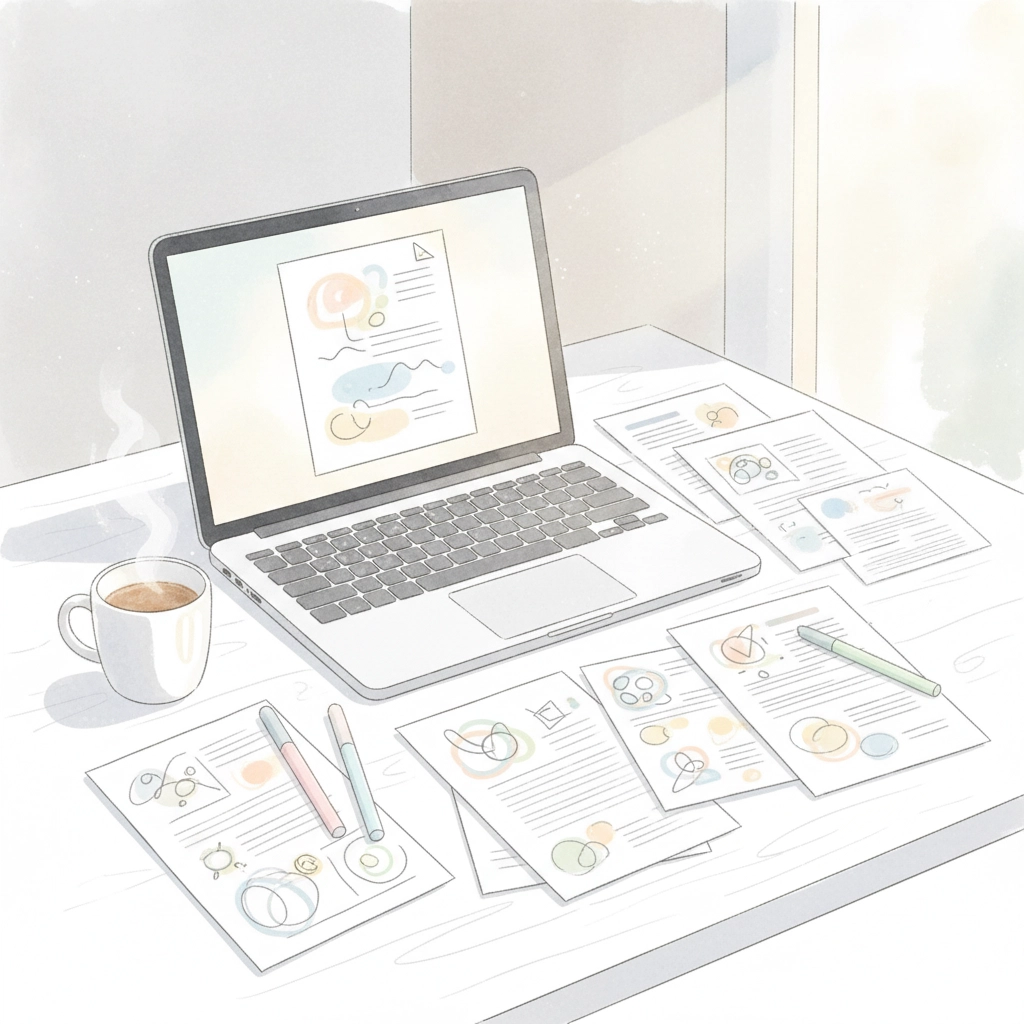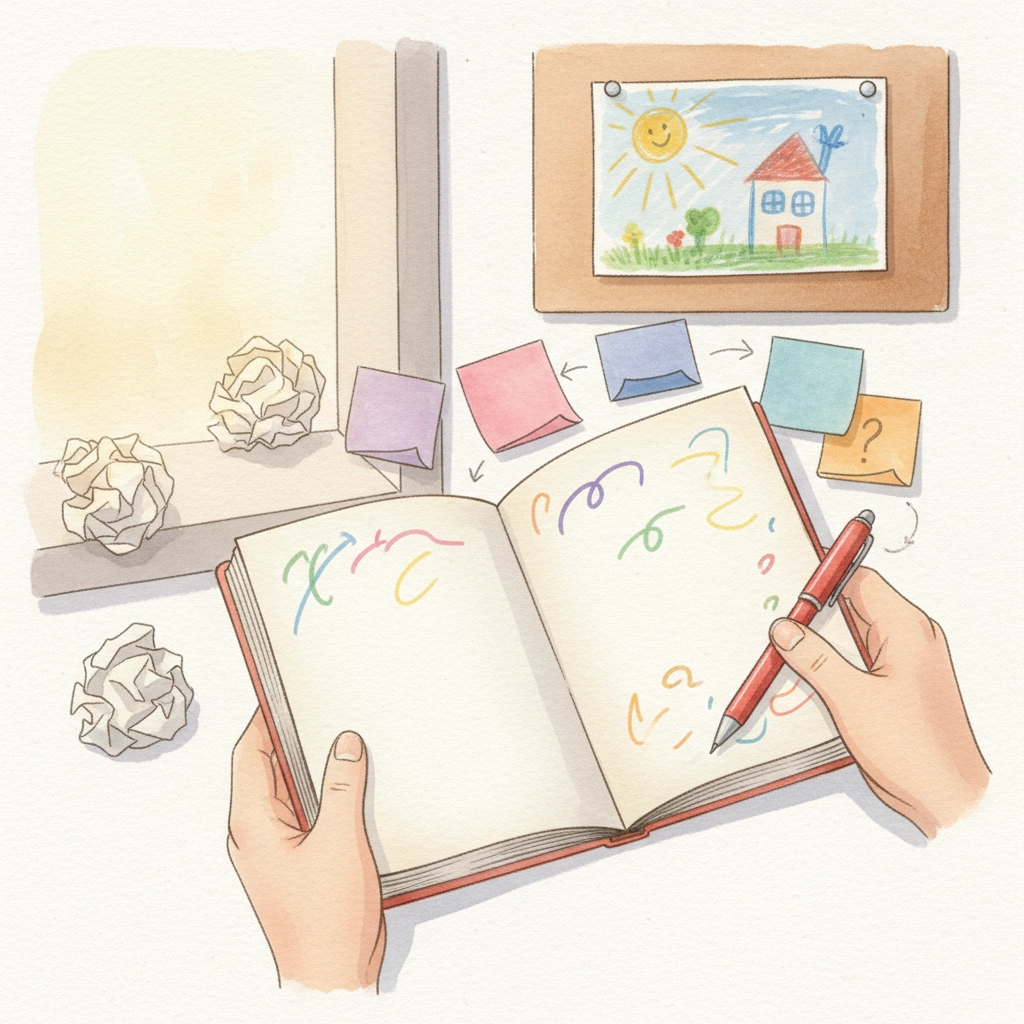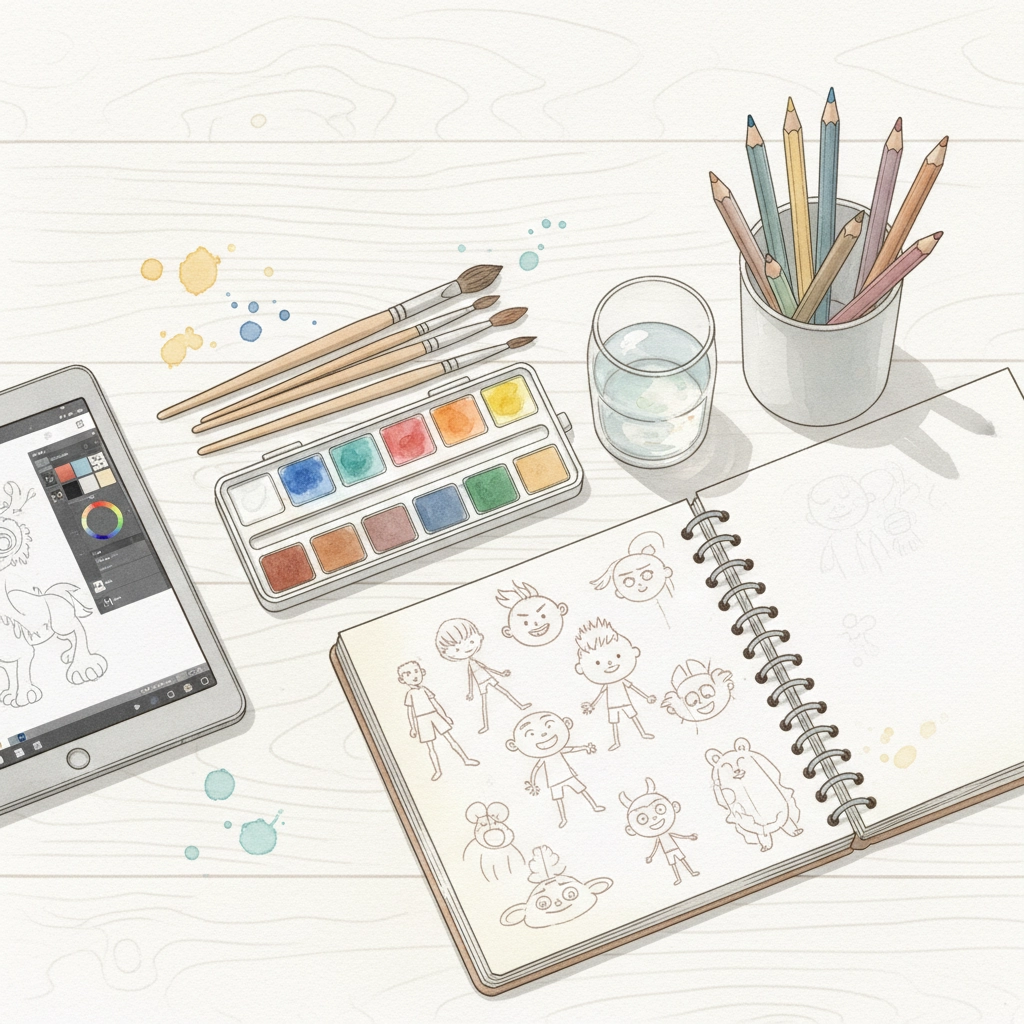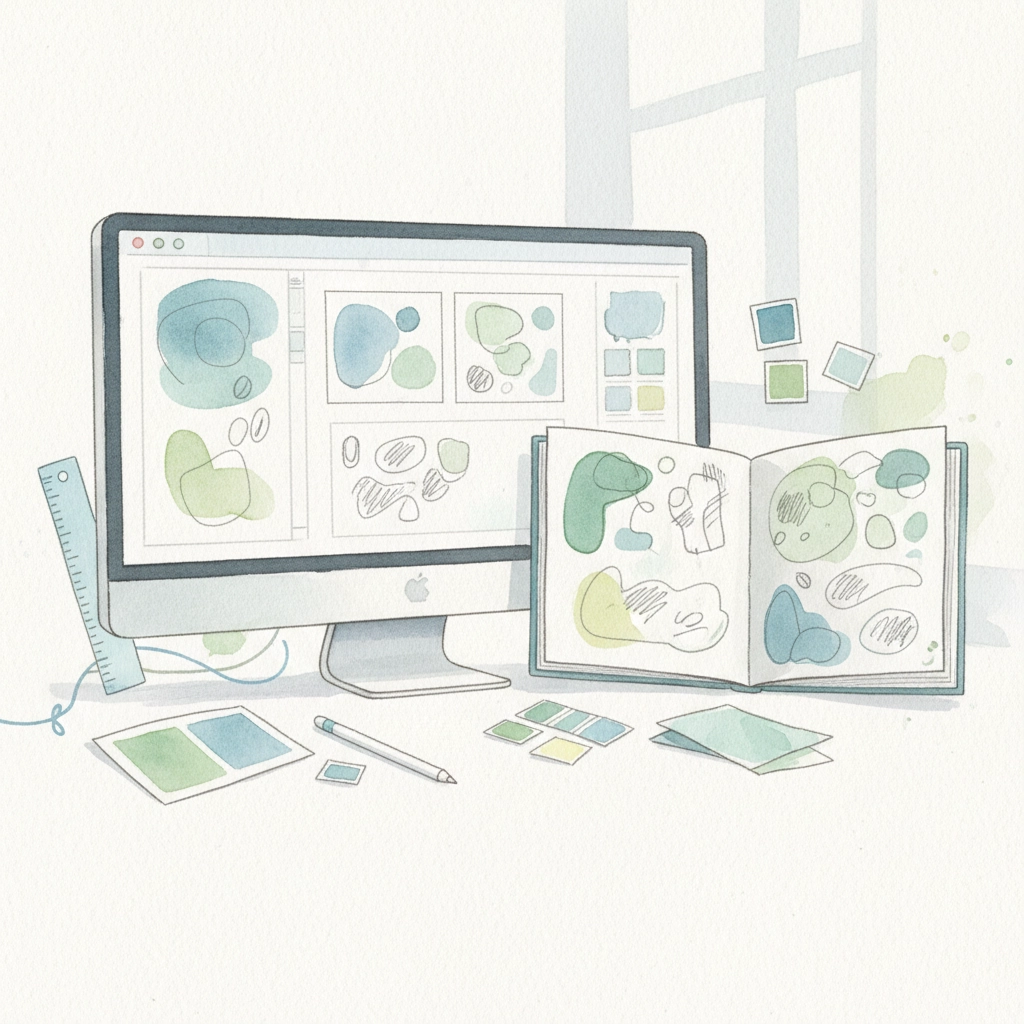Whether you’re a therapist wanting to create SEL books for kids, an educator developing social emotional learning books, or any mission-driven professional with a story that needs telling, the world of self-publishing can feel overwhelming. But here’s the thing—you already have the expertise kids need to develop a meaningful story. You just need a roadmap to get your book into their hands.
So you want to self-publish a children’s book, but have no idea where to start.
You’re not alone. Most people picture some vague mountain of work involving design software, printing companies, book distributors, and a whole lot of money.
It’s true that there are a lot of moving parts. But it’s also true that you can take them one small step at a time: and do more than you think with the tools you already have.
Here’s a simple breakdown of what self-publishing a picture book actually involves:
1. Write your manuscript.
Don’t worry about fancy formatting. Just get the story down. Picture books are typically 500–700 words, and they rely heavily on rhythm, pacing, and page turns. It’s okay if yours is messy or too long right now. That’s part of the process.

2. Edit (without over-editing).
This part feels intimidating, but it doesn’t have to mean paying an editor from the get-go. Even if you hire an editor (which we always highly recommend), you make their lives so much easier by taking the time to self-edit.
Read your draft out loud. Give it to a friend, a teacher, or a parent you trust—or all of the above. Ask them where they stumbled, where they lost interest, and what they loved. Small, thoughtful revisions go a long way.
Hot tip: Ask a child (who is of reading age) to read the manuscript—even if your particular book is targeted to younger kids who may not be able to read. If a child can smoothly read your book, that’s a great sign that it flows intuitively. My two kids are my most treasured beta testers.
3. Plan your layout.
Picture books are usually 32 pages, but not all of those are story pages. There’s the copyright page. Title page. Half-title page. Dedication. Foreword. Resources. You definitely don’t need all of these in your book, but you should absolutely understand their functions and decide which ones you will include.
Mapping out what goes where helps you think visually, even before you have illustrations. A rough page-by-page outline will help you catch pacing issues and prepare for what each page needs to do.
Hot tip: I create my storyboards in Canva and it’s a crucial step. Reach out if you’re interested in the storyboarding layout I use, I’d be happy to share it.

4. Figure out the illustrations.
You don’t need to commission a full-blown art team. You just need a plan. Here are some suggestions:
- Use AI or Canva to sketch out ideas, then hire someone for a few key spreads.
- Take time to look for an illustrator who offers pricing within your budget. Look for artists who are new to the scene, trying to grow their portfolio, or live in a country where the cost of living is lower.
- Take some time to practice your digital art skills in Procreate or even follow some YouTube tutorials.
- Illustrate with stick figures (check out Todd Parr) keeping things minimal and charming.
There are options.
5. Design your interior (it’s not as tech-y as it sounds).
You can use free tools like Canva or BookWright to place your text and images on each page (we’ve only used Canva, can’t vouch for any other tool personally but we’ve heard good things). The goal is clarity, not flash. If a five-year-old can follow it, you’re doing it right. Less is more. This is for practical reasons, and your output ends up looking more professional.

6. Choose where and how to print.
Most first-time self-publishing authors on a budget start with print-on-demand (like Amazon KDP), which means you don’t have to order any copies upfront. You upload your files, set your price, and the book is printed only when someone orders it. No inventory, no shipping, no warehouse.
Hot tip: Spare your future self some heartache and research how to properly format your files for KDP. For example, the inside pages of the book need to be uploaded as single pages, even the double spreads. But the front/back cover needs to be uploaded separately fron the inside pages as a double spread.
7. Get your book into readers’ hands.
This part can be as simple or as involved as you want. Start with people you know. Share your book with teachers, friends, family, and your community. You don’t need a splashy launch (but it’s fun if you’re up for it). You just need to let people know it exists. If you’re super committed and have a small marketing budget, learn about Amazon ads. I’m still learning: it’s not for the faint of heart.

One last thing:
You’re allowed to figure it out as you go. That’s not failure—that’s the process. It’s okay to Google things mid-step, change your mind, or ask a million questions.
You don’t need to be an expert. You just need to start.
And it’s never too late. I know this better than anyone: my first book lived in my Notes app on my phone for 5 years before I did anything with it, then I spent nearly 3 years working on publishing it.
Why This Matters for Mission-Driven Professionals
If you’re creating children’s books about emotions, developing books for therapists to use with kids, or crafting books about mindfulness for children, you’re not just writing: you’re filling crucial gaps in the market. Books for parents about SEL and children’s books mental health resources are desperately needed, and your professional experience gives you insights that pure authors might miss.
The beauty of self-publishing is that you maintain control over your message. No publisher will water down your therapeutic approach or ask you to remove the mindfulness exercises that make your book special. You can create exactly what kids, parents, and educators need.
I’d love to know: Where are you in the process? Just starting? Midway through? Stuck somewhere? Reach out to let me know, I reply to every single email.

